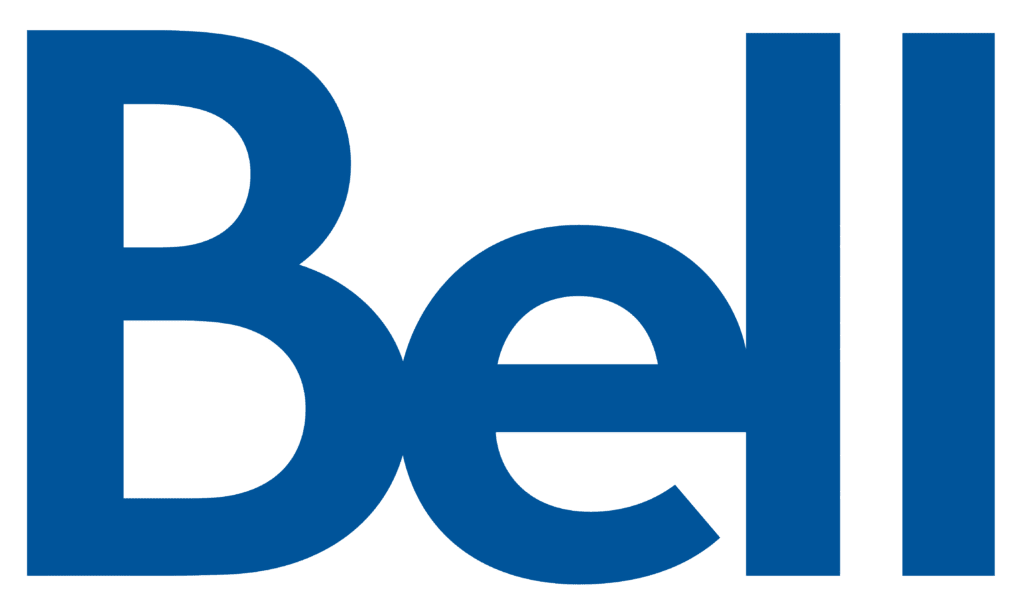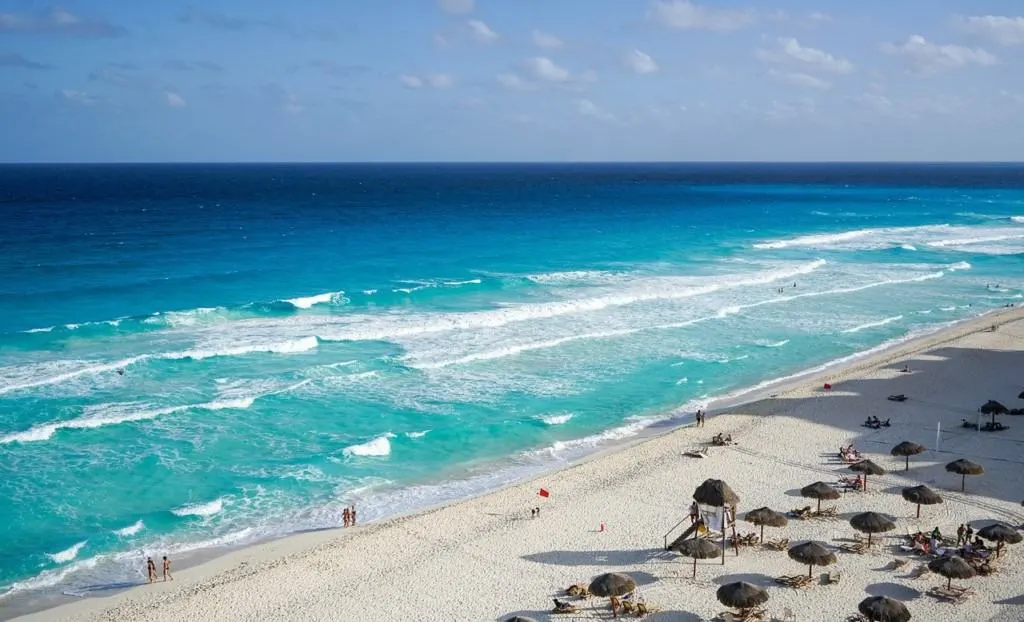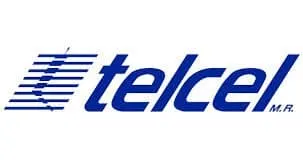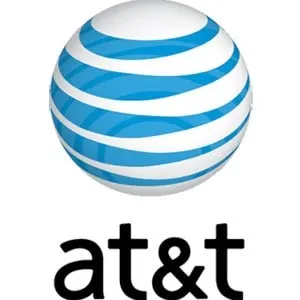Although North America consists of only three countries, Canada, Mexico, and the United States, it is a vast continent. Canada is the second-largest country in the world by size, while the US is the fourth-largest. Unlike Europe, where you can drive through various countries within a day, it can take you a few days go coast to coast in Canada and the US.
While exploring these big countries, you want to have the right cell phone service that gives you talk, text, and data when traveling.
What are the best SIM card options in North America? It depends on your needs. In Canada, getting a prepaid plan with Rogers, Telus, or Bell would do you well. In the United States, most travelers will experience good coverage and service with T-Mobile, while AT&T will be recommended when visiting remote places. In Mexico, Telcel has the coverage and speeds but is more expensive than Movistar that has cheaper data packages but worse coverage.
Canada and Mexico have three big providers, while the US has four. All these countries have Mobile Virtual Network Operators (MVNOs), which are companies that run on the networks of the leading providers.
Often, they are cheaper than the big carriers, but their service may not be as good because those customers have a lower priority on the networks of the big carriers.
This is especially true in the US where MVNOs get throttled. This is, however, not the case in Canada. In Mexico, I am not so sure because the market share of MVNOs is around 2%.
With that out of the way, let’s explore the best SIM card options when traveling in North America.
Original publication: 28th of November 2019. Last updated: 15th of January 2024.
Table of Contents
Why Do You Need a Local SIM Card?
If you are putting together a trip to another country, one thing that might slip your mind is SIM cards. Why do you need one? Are they indispensable?
The simple answer is no – you do not have to have a local SIM card. However, if you do not want to spend mass amounts of money on data and roaming charges, then you should highly consider opting for a SIM card.
SIM cards will ensure that you can stay in touch and do all of the things you need to do on your phone without the ridiculous pricing.
Canada SIM Cards

Canada has three large providers: Rogers, Telus, and Bell Mobility. Canada has various regional providers, such as Vidéotron in Quebec and eastern Ontario, SaskTel in Saskatchewan, and Eastlink in several provinces. I will focus on nation-wide providers, as most travelers are interested in those carriers.
Because all Canadian providers are geared towards postpaid customers with contracts, prepaid prices are the highest in the American continent (which includes North-, Central-, and South/Latin-America – probably the Caribbean too).
Just like in the US, prices do not have the relevant taxes included in them – be aware. In Canada, they use the Canadian Dollar, also known as CAD. CAD 1 is around USD 0.75. The prices listed in this article have been converted from CAD to USD and often listed as just $.
Rogers

Rogers is the largest provider in Canada. In fact, the list above is ranked from largest to smallest. Because it is the leading telecommunication company in Canada, it has a wide variety of options for visitors to choose from.
Rogers is unique in that it offers a “Pay As You Go” SIM, which, as the name may suggest, charges you as you use the card for calls, texts, and data.
Rogers divides its plans into two major categories Talk & Text and, as you may have guessed, Talk, Text & Data Plans.
Since travelers use a lot of data, especially in a large country like Canada, this article will only go over the plan with data as well as talk and text.
Their first plan is the most expensive at around $48, and it comes with 150 minutes of daytime calls, unlimited texting locally, in the US, and internationally, as well as 1 GB of data. This plan is best for individual family members who want to stay in touch and also video chat back home.
The second plan, which is considerably cheaper at $37, has the same talking and messaging perks as plan #1 but with a reduced data plan of only 500 MB. This is an excellent plan for someone on a week-long trip who does not need much access to the internet.
The cheapest plan for travelers to Canada includes only 50 minutes of calling, unlimited messaging within Canada, and 250 MB of data. This plan is best for anyone in Canada for a day or two waiting for a connecting flight or on a short business trip.
You can add an extra GB of data for $14.80 per month.
Plan #1 (≈USD 48.07)
- Talk:150 minutes of local daytime calls – also unlimited local calls from 6 p.m. to 7 a.m.
- Messaging: Unlimited locally and internationally
- Data: 1GB (Add an extra GB for ≈USD 14.80 per month)
Plan #2 (≈USD 37)
- Talk: 150 minutes of local daytime calls – also unlimited local calls from 6 p.m. to 7 a.m.
- Messaging: Unlimited locally and internationally
- Data: 500 MB
Plan #3 (≈$22.20 USD)
- Talk: 50 minutes anytime but local calls only
- Messaging: Unlimited but only in Canada
- Data: 250 MB
You can purchase plans from official Rogers stores, as well as mobile kiosks, and the airport.
Telus

Telus is another great provider. Coming in second after Rogers, this telecommunication company has some great plans tourists and visitors to Canada can take advantage of.
You can purchase SIM cards and add data as you go, or you can choose one of three the card options, which include the Elite 67, Hero 45, and the Connect 37 options.
The Elite 67 plan is the most expensive at around $50 and comes with 500 minutes of local calls, unlimited texting locally, and 1 GB of data! This is a solid plan for anyone with a family traveling with teenagers or young adults. This way, you can call and text each other on the go and keep track of everyone at all times without worrying about data or call minutes.
The second option is the Hero 45 prices at $33. This plan comes with a reduced 300 minutes of local calls, unlimited local texts, and 500 MB of data. This is a solid plan for someone on a week-long trip to Canada looking to disconnect a little.
Last but, well, in this case, least, the Connect 37 option. This plan comes at around $27 and offers 150 minutes of free local calls, unlimited local texting, and only 250 MB of data. Again, this is a great plan for a business trip where you need to stay connected to your peers but also have access to WIFI.
Elite 67 (≈USD 49.60)
- Talk: 500 minutes within Canada
- Messaging: Unlimited within Canada
- Data: 1 GB
Hero 45 (≈USD 33.30)
- Talk: 300 minutes within Canada
- Messaging: Unlimited within Canada
- Data: 500 MB
Connect 37 (≈USD 27.40)
- Talk: 150 minutes within Canada
- Messaging: Unlimited within Canada
- Data: 250 MB
You can also buy additional data at around $22 for every GB, but be careful because videos and streaming will eat up data faster than a Canuck eats maple syrup… a little Canada humor for you.
Bell Mobility

Bell is the smallest major telecommunication provider, so you would assume they have multiple affordable options. Unfortunately, that is not the case.
They do have multiple options in general. Since this article is identifying the best SIM card for when you visit Canada, we have focused on Bell’s Carte Multi-SIM option.
The Carte card comes at a fixed price of around $8 and gives you the option to purchase prepaid data. This is where it gets interesting. Bell is perhaps more data-focused than the Rogers and Telus, but that does not necessarily mean it is cheaper. Luckily there are a lot of options to choose from.
After the initial SIM card payment, you can choose from a range of data options from $7.40 for 100 MB all the way up to $62.90 for 10 GB.
Carte Multi-SIM Card (≈USD 7.40)
Plus an additional
- ≈USD 7.40 for 100 MB of data
- ≈USD 33.30 for 2GB of data
- ≈USD 44.40 for 5GB of data
- ≈USD 62.90 for 10GB of Data
If you purchase 10 GB of data and you exceed your limit, you will pay an additional $7.40 for each GB used. You can also buy a daily data plan for $1.50, which gives you about 20 MB of data. This is enough to use Google Maps for a few quick searches and hail a ride from one of the ride-sharing apps.
For an additional $37, you can get unlimited local and Canadian long-distance talking time. You can also purchase 50 GB of data for a cool $110, but it would be a very unusual amount, especially for travelers and visitors to Canada.
RELATED: Want to learn more about SIM cards in Canada? Check out my Canada SIM card buying guide with up-to-date and detailed information regarding prices and packages.
Mexico

Mexico has three mobile operators: Telcel (by América Móvil), Movistar (by Telefónica), and AT&T Unidos Mexico. Mexico only has various Mobile Virtual Network Operators (MVNOs), but they have a small market share, and not many travelers use them (I have not used them either). Usually, you will do well with the leading carriers.
Telcel will be the recommended provider when going to Mexico. Although more expensive than the other options, it has the best coverage of them all. If you are on a budget, Movistar may do well if staying in populated areas, as their coverage is not the best in remote places.
Now, let’s say you are doing a tour in North America and start your trip in Mexico, it will be cheaper to use your Mexican SIM card with international roaming in both Canada and the United States than buying a new SIM card in those countries.
Apparently, AT&T started a price war in 2015 by including US and Canada roaming at Mexican rates. Now all other Mexican providers offer this option. Although convenient, do not take too much advantage of it, as your line may be suspended if you are out of Mexico for more than a month if your roaming consumption exceeds Mexican usage.
In Mexico, SIM cards are called Chips. Registration is often not necessary but be sure to bring your passport and ID with you when buying your chip – you never know.
They use the Mexican Peso in Mexico, which is denominated with the dollar sign; $. To avoid confusion, the prices will be listed in the official currency code, MXN, and not just $. MXN 1 is USD 0.05.
Telcel

Telcel is the leading provider with a market share of around 65%. Their prepaid line is called Amigo and has the best coverage around the country. You can choose from the following Telcel Amigo prepaid plans:
- Amigo sin límite (Amigo without limits)
- Amigo por segundo (Amigo per second)
- Amigo Óptimo plus sin fronteras (Amigo ultimate plus without borders)
Amigo sin límite
Amigo sin límite are combo plans with set allowances for data, minutes, and SMS valid in Mexico, Canada, and the US. Calling within and to those countries are free of charge. These plans do not auto-renew and will typically activate a plan equivalent to the recharge order. All packages come with unlimited WhatsApp calls in and to Mexico, Canada, and the US.
- 100 MB and 200 app MB valid for 1 day for MXN 20
- 120 MB and 300 app MB valid for 3 days for MXN 30
- 400 MB and 500 app MB valid for 7 days for MXN 50
- 500 MB and 1 app GB valid for 13 days for MXN 80
- 1300 MB and unlimited app data valid for 15 days for MXN 100
- 2000 MB and unlimited app data valid for 26 days for MXN 150
- 3000 MB and unlimited app data valid for 30 days for MXN 200
- 4000 MB and unlimited app data valid for 33 days for MXN 300
- 6000 MB and unlimited app data valid for 33 days for MXN 500
Facebook, Twitter, Instagram, and Snapchat are counted against your app data allowance and not your regular data allowance.
Amigo por segundo
Amigo por Segundo are plans with a lower standard rate for data, calls, and texts. Incoming calls in Mexico, Canada, and the US are free while making calls and sending SMS into these countries are charged at the same domestic rate. Data costs $0.85, which is why you would want to add data packages.
Amigo Óptimo plus sin fronteras
Amigo Óptimo plus sin fronteras are plans with higher standard rates for data, calls, and texts in Mexico, Canada, and the US, but can be combined with packages that give top-up bonuses that make it cheaper if you use it more.
- 20 MXN120 MB regular data and 200 MB for Facebook and Twitter valid for 1 day for MXN 20
- 150 MB regular data and 300 MB for Facebook and Twitter valid for 3 days for MXN 30
- 400 MB regular data and 500 MB for Facebook, Twitter, Instagram, and Snapchat valid for 7 days for MXN 50
- 600 MB regular data and 1 GB for Facebook, Twitter, Instagram, and Snapchat valid for 13 days for MXN 80
- 1.5 GB regular data and unlimited data for Facebook, Twitter, Instagram, and Snapchat, to be used in Mexico only, valid for 17 days for MXN 100
- 3 GB regular data and unlimited data for Facebook, Twitter, Instagram, and Snapchat, to be used in Mexico only, valid for 17 days for MXN 150
- 4 GB regular data and unlimited data for Facebook, Twitter, Instagram, and Snapchat, to be used in Mexico only, valid for 17 days for MXN 200
- 7 GB regular data and unlimited data for Facebook, Twitter, Instagram, and Snapchat, to be used in Mexico only, valid for 17 days for MXN 300
- 13 GB regular data and unlimited data for Facebook, Twitter, Instagram, and Snapchat, to be used in Mexico only, valid for 17 days for MXN 500
Movistar Mexico

Movistar was Telcel’s only competitor until AT&T ruined their party. Movistar’s coverage is not as robust at Telcel’s or AT&T’s, but it provides cheaper data packages and does not suffer as much from congestion as Telcel.
You can buy the Movistar starter pack called chip prepago at any Movistar dealer, 7-11s, Walmarts, or at airports for MXN 60, which sometimes comes with up to MXN 100 in credit.
The Prepago comes in two variants: Prepago Simple (Prepaid Simple) and Prepago Ilimitado (Prepaid Unlimited). The Simple is the base plan where you can add internet packages, while the Ilimitade has plans with higher allowances for social media.
For both plans, you can add the following Prepago plans with data, calls, and SMS
- Unlimited WhatsApp VoIP calls valid for 3 days for MXN 10
- 300 MB regular data, 200 MB for WhatsApp, Facebook, and Twitter, and unlimited minutes and texts to Mexico, Canada, and the US, valid for 3 days for MXN 30
- 500 MB regular data, 1 GB for WhatsApp, Facebook, Twitter, Instagram, and Snapchat, and unlimited minutes and texts to Mexico, Canada, and the US, valid for 3 days for MXN 50
- 1.4 GB regular data, unlimited data for WhatsApp, Facebook, Twitter, Instagram, and Snapchat, and unlimited minutes and texts to Mexico, Canada, and the US, valid for 3 days for MXN 100
- 2.1 GB regular data, unlimited data for WhatsApp, Facebook, Twitter, Instagram, and Snapchat, and unlimited minutes and texts to Mexico, Canada, and the US, valid for 3 days for MXN 150
- 3 GB regular data, unlimited data for WhatsApp, Facebook, Twitter, Instagram, and Snapchat, and unlimited minutes and texts to Mexico, Canada, and the US, valid for 3 days for MXN 200
Prepago Simple
Below are some of the Prepago Simple data-only packages:
- 250 MB valid for 1 day for MXN 10
- 750 MB valid for 3 days for MXN 30
- 1250 MB valid for 5 days for MXN 50
- 2500 MB valid for 15 days for MXN 100
- 3500 MB valid for 25 days for MXN 150
- 4500 MB valid for 30 days for MXN 200
Below are some of the data packages that include an allowance for social media apps as well:
- 35 MB regular data and 1 GB for WhatsApp valid for 1 day for MXN 10
- 200 MB regular data and 1 GB for WhatsApp, Facebook, and Twitter valid for 5 days for MXN 60
- 750 MB regular data and 1 GB for WhatsApp, Facebook, and Twitter valid for 5 days for MXN 120
- 1.5 GB regular data and 2 GB for WhatsApp, Facebook, and Twitter valid for 5 days for MXN 200
- 3 GB regular data and 2 GB for WhatsApp, Facebook, and Twitter valid for 5 days for MXN 300
Prepago Ilimitado
Below are some of the combo plans with unlimited calls and texts to Mexico, Canada, and the US, data, roaming allowance, and app allowance:
- 15 MB regular data and 1 GB for WhatsApp valid for 1 day for MXN 10
- 75 MB regular data and 1 GB for WhatsApp, Facebook, and Twitter valid for 3 days for MXN 30
- 200 MB regular data and 1 GB for WhatsApp, Facebook, and Twitter, and MXN 75 roaming credit valid for 15 days for MXN 75
- 1.2 GB regular data and 2 GB for WhatsApp, Facebook, and Twitter, and MXN 200 roaming credit valid for 15 days for MXN 200
- 2 GB regular data and 2 GB for WhatsApp, Facebook, and Twitter, and MXN 300 roaming credit valid for 15 days for MXN 300
AT&T Mexico

AT&T bought Iusacell and Nextel back in 2015 and rebranded them into AT&T Unidos Mexico, but I will call them just AT&T.
You can buy AT&T SIM cards at their stores, but also in Walmarts, Coppels, and Famas. The SIM cards at these stores are often free but require a mandatory top-up. Other stores will sell you the SIM cards for around $100.
You can choose out of the following AT&T plans: AT&T Más (AT&T More) and AT&T por segundo (AT&T per second). I recommend going with Más so that you do not pay per use. The following AT&T Más plans are available:
- 300 MB valid for 3 days for MXN 30
- 500 MB valid for 5 days for MXN 50
- 1 GB valid for 14 days for MXN 100
- 1.5 GB valid for 28 days for MXN 150
- 2 GB valid for 35 days for MXN 200
All plans include unlimited calls and texts. The calls, SMS, and data are valid in both Mexico and the US. Unfortunately, Canada has been excluded as of lately. Facebook, Messenger, WhatsApp, Twitter, Instagram, and Snapchat usage is not counted against your data allowance.
RELATED: Want to learn more about SIM cards in Mexico? Check out my Mexico SIM card buying guide with up-to-date and detailed information regarding prices and packages.
United States

The United States has four major carriers: AT&T, T-Mobile, Sprint, and Verizon. T-Mobile will be the most interesting for most travelers unless you are going to remote areas or states, then AT&T will do well.
Unless you have a compatible phone that works with Verizon’s network, I would avoid them (especially if you do not have a CMDA-compatible phone, which is almost every phone in the world). Sprint has the smallest network of the four and does not offer voice calls over 4G/LTE, meaning that you will not receive calls if you have a none-Sprint phone – not useful.
Most phones will not be able to take advantage of the 4G/LTE network in the United States because they use different bands and frequencies in the US than in other countries. If you manage to see 4G/LTE on your phone, your phone may be lying to you (or you are lucky – it is often the former, based on my experiences).
When I was traveling around the US for 1.5 months back in 2015, I went with H2O Wireless, which is a Mobile Virtual Network Operator (MVNO) on AT&T’s network. As it has been more than four years, I used them, my recollection of their service is not the best. However, I do know that I was not too pleased with the service I got for the money I spent. Nowadays, data packages start at $20 for 1 GB, which is high compared to other countries in the world. Not only was it expensive, but the speeds were questionable, and the coverage was not impressive.
My partner, however, used T-Mobile earlier in 2019 and was happy with it. My partner traveled in California (San Francisco, Los Angeles, and Mobile Alabama – even by bus between Los Angeles and San Francisco) and did not complain about coverage, while I was struggling with having some sort of coverage while roaming on AT&T’s network with my Danish provider, Tre Danmark (3 Denmark), who offered free roaming in the US (although my connection was much better when roaming on T-Mobile in Dallas, Texas).
I understand that as a roamer, I get a lower priority on AT&T’s network than actual customers, but it was remarkable to see the considerable difference between roaming on AT&T in Los Angeles and T-Mobile in Dallas. As my partner has great first-hand experience with T-Mobile, and many travelers vow that T-Mobile did them well, I would highly recommend getting a T-Mobile SIM card while in the US.
Do note that all four major networks have many MVNO (for example, AT&T has H2O Wireless, Cricket Wireless, and Net10, while T-Mobile has Metro, GoSmart Mobile, and SimpleMobile), I recommend sticking with the carriers themselves because they have a proven track record with travelers. You may end up with whacky service with an MVNO like me while paying first-class prices for them.
With that out of the way, let’s see what options we have with T-Mobile and AT&T.
T-Mobile US

You can buy a T-Mobile activation kit in T-Mobile stores, authorized dealers, or many other stores like Best Buy. Buying a SIM card in a T-Mobile store will cost you $10 (plus local taxes – remember, taxes are calculated at the time of purchase and are not calculated within the listed price). Other stores may charge you much more for these SIM cards.
Some travelers report that buying a SIM card on eBay or Amazon may save you money. Sometimes, T-Mobile has promos where they sell SIM cards for $1, which get bought in bulk and resold on online marketplaces. Either way, be careful with buying SIM cards online because inactivated SIM cards will not work unless it comes with a prepaid plan activation code.
You can take advantage of T-Mobile monthly packs, which come with the following allowance:
- 2 GB for $10
- 6 GB for $25
- 10 GB for $40
- 14 GB for $55
- 18 GB for $70
- 22 GB for $85
These monthly packs are valid for 30 and renew automatically (although the renewal will fail if you do not have enough credit) – remember, taxes are not included in the price. If you go over your allowance, your speed will be reduced to “up to 2G speeds”, which I assume is 128 kbps. All I can say is that the speed is insufferably slow.
T-Mobile used to sell tourist plans, but they have been discontinued, and visitors who are interested in them can buy a tourist SIM card from Ultra Mobile, one of T-Mobile’s MNVOs.
Ultra Mobile Tourist SIM Card
You can find the Ultra Mobile tourist SIM card in some T-Mobile stores, or T-Mobile Preferred retail stores around the country. The SIM card comes with 1000 domestic minutes, 100 minutes to 80 countries, unlimited international texting (this includes domestic texting as well), and unlimited data, of which 2 GB on 4G/LTE speeds, which are all valid for 21 days for $30 – not a bad deal.
AT&T

AT&T is the biggest (GSM) provider in the United States and provides nationwide coverage. AT&T does not have a 2G network anymore. This should not be a problem for most travelers unless you are traveling with a “dumb phone.”
You can buy an AT&T Prepaid SIM card kit for $20 (pre-tax) in AT&T stores. It will cost you $10 if you order it online (and ship it to a US address), or stores like Best Buy, Target, or Walmart. Some stores or kiosks will charge you more because they can. Other stores will waive the fee if you top the card up immediately at the store – it is worth asking.
You can buy the following AT&T prepaid plans. Do note that these plans are monthly packages valid for 30 days that can be automatically renewed. If you choose the auto-pay option, you could pay $5 to $10 less per month than the listed price below. However, if you are staying in the US for less than a month, you cannot take advantage of the deal. I am not sure if you can use foreign details to sign up for auto-pay.
- Unlimited calls and SMS within the US with no data (or 250 MB for $5) for $30
- Unlimited calls and SMS within the US with 1 GB in the US (after full usage, unlimited data at 128 kbps) for $35
- Unlimited calls and SMS within the US, to Canada and Mexico with 8 GB for in the US, Canada, and Mexico (after full usage, unlimited data at 128 kbps) for $50
- Unlimited calls and SMS within the US, to Canada and Mexico with unlimited data for in the US, Canada, and Mexico (although your connection will be deprioritized during network congestion, video streaming at max 1.5 Mbps and no hotspot use) for $65
- Unlimited calls and SMS within the US, to Canada and Mexico with 8 unlimited for in the US, Canada, and Mexico (22 before your connection will be deprioritized during network congestion and max 10 GB for hotspot use in the US before throttled to 128 kbps) for $85
You can also buy the following AT&T data-only plans:
- 10 GB for $50
- 15 GB for $70
However, when buying these plans at an AT&T store, do not say that you want to use it for a phone but for a tablet instead. These data-only plans, also known as Data Connect, are advertised for tablets, and the sales rep may refuse to sell you these plans if you tell them you want to use them for your phone, even though they work on phones too.
RELATED: Want to learn more about SIM cards in the United States? Check out my United States SIM card buying guide with up-to-date and detailed information regarding prices and packages.
Conclusion
That is it, your ultimate guide to buying a SIM card in North America. Getting a SIM card in this region is straightforward compared to other regions where you have to register yourself.
On the downside, data is relatively expensive in Canada and the United States, especially when looking at other regions in the world.
Either way, using local SIM cards will often be cheaper than roaming with your provider, so it is worth it if you want to be connected when exploring North America.
